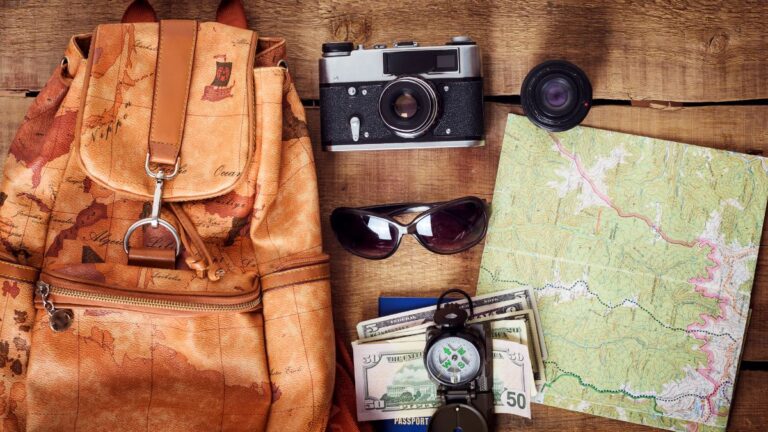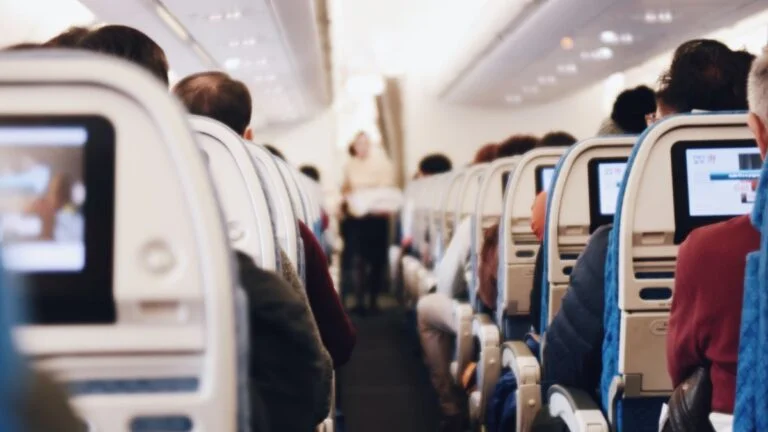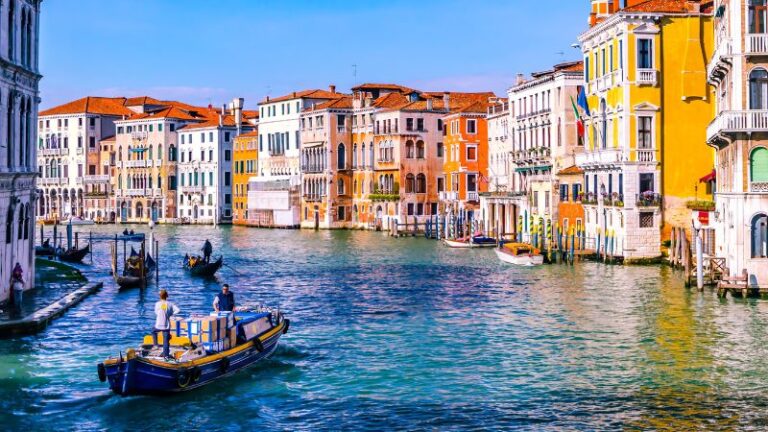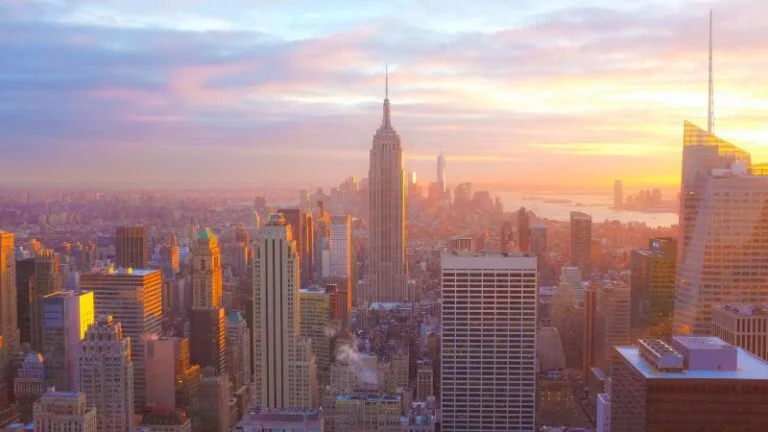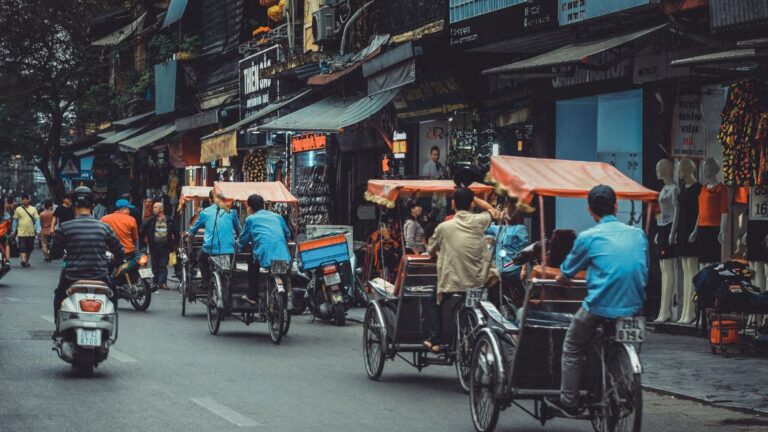Worst Time to Visit Panama: Avoiding Rainy Season and Carnival Crowds
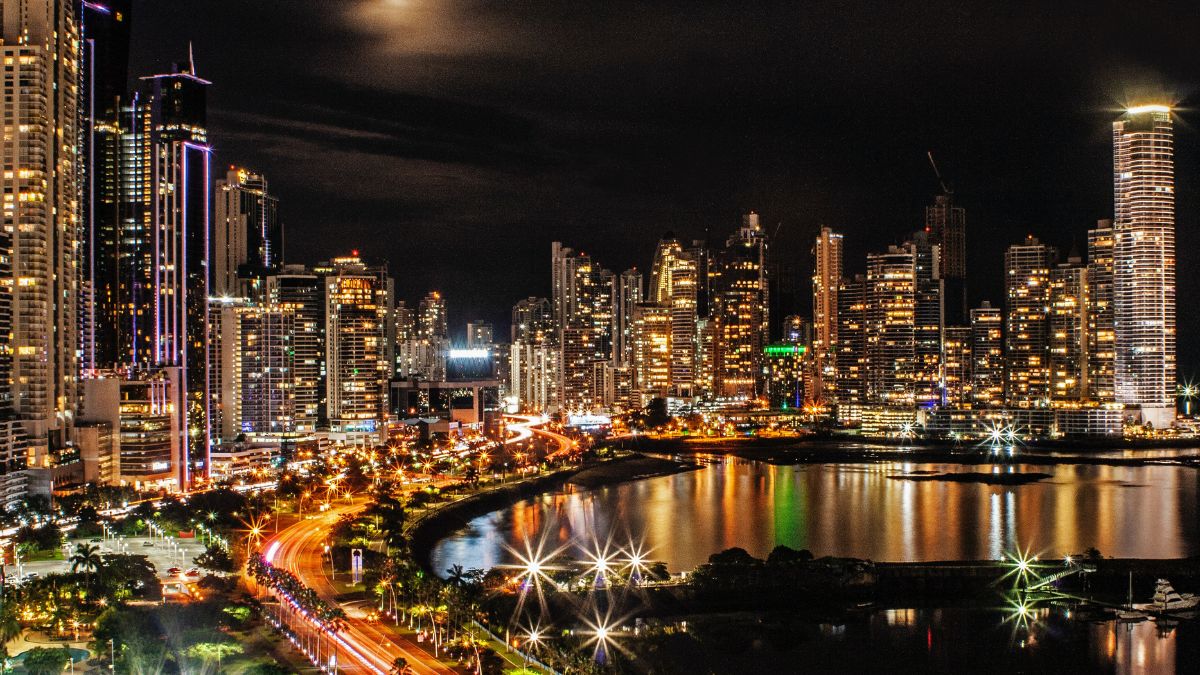
As participants in Amazon Associates and other programs, we earn from qualifying purchases. This comes at no additional cost to you. For more details, see our Affiliate Disclosure.
Panama, with its bustling cities, sandy beaches, and lush rainforests, offers visitors an eclectic mix of experiences. However, timing is everything when it comes to enjoying the full potential of this Central American gem. This article will guide you through the less desirable periods to visit Panama, highlighting two primary factors you might want to avoid: the unpredictable rainy season and the hectic hustle of Carnival crowds.
By understanding these elements, you’ll be well-equipped to make the most of your Panama trip, minus any unnecessary hassles or discomfort.
Understanding Panama’s Climate: The Rainy Season
Panama, lying in the tropical region, has a climate that primarily alternates between two distinct seasons: the dry season and the rainy season. The dry season, spanning from mid-December to mid-April, is often considered the best time for travel due to the sunny, clear skies and reduced humidity. However, the flip side of the Panamanian climate is the rainy season, which typically begins in mid-April and lasts until mid-December.
During the rainy season, Panama experiences heavy, but usually short-lived, showers almost daily. The precipitation peaks around September and October, when the country can experience persistent rainfall for days on end. This abundant rainfall is responsible for keeping Panama’s landscapes lush and its canal operational, but it can pose significant challenges for travelers.
While the intensity and duration of the rain can vary across different regions of the country, the general rule is that the further east you travel, the heavier and more prolonged the rainfall. Panama City, on the Pacific side, experiences less rainfall compared to Colon on the Atlantic side.
Even though the rainy season brings a particular charm to the country with its rich greenery and a respite from the heat, it may dampen your plans, quite literally, if you’re not prepared for it. In the next section, we’ll delve into the specific challenges that travelers might encounter during Panama’s rainy season and how you can mitigate them.
Navigating the Rain: Challenges for Travelers
Traveling during Panama’s rainy season can present a unique set of challenges. The most obvious one is the potential for your plans to be disrupted by sudden, heavy showers. While these downpours are usually brief, they can still be enough to halt outdoor activities and delay transport services.
Road travel can be particularly tricky during this time, especially in rural or remote areas. Some roads may become slippery and difficult to navigate due to the rain, and in extreme cases, heavy rainfall can lead to landslides that block roads entirely. If you’re planning to rent a car, make sure you’re comfortable driving in these conditions and always check local weather forecasts before setting off.
Another challenge is that visibility can be significantly reduced during heavy rain, which can impact both driving and sightseeing. If you’re hoping to take in Panama’s stunning views, you might find them obscured by rain clouds.
The rain can also impact access to some of Panama’s top attractions. Some outdoor sites, like hiking trails or wildlife reserves, may be closed or limited during heavy rainfall for safety reasons. Similarly, water-based activities such as snorkeling or scuba diving might be affected by poor water visibility and increased sea turbulence.
Finally, the rainy season often coincides with higher humidity, which some travelers might find uncomfortable. This sticky heat can make strenuous activities more tiring and can lead to increased dehydration if you’re not careful.
Despite these challenges, don’t write off visiting Panama during the rainy season just yet. With some careful planning and flexibility, it can still be an enjoyable experience. Let’s explore some ways to mitigate these challenges in the next section.
Effects of Rainy Season on Outdoor Activities
The impact of the rainy season on outdoor activities in Panama can be significant, but it isn’t always a deal-breaker. Understanding the potential effects on various activities can help you prepare better and make the most of your visit, even when the weather isn’t on your side.
Hiking and Wildlife Viewing
While the lushness of the rainforest is amplified during the rainy season, it can make hiking a bit challenging. Trails can become slippery and muddy, making them harder and potentially dangerous to navigate. Some trails might also be closed due to the risk of landslides.
However, the rainy season also attracts a wide variety of wildlife, turning the rainforest into a naturalist’s dream. It’s crucial to plan these activities for the morning when rain is less likely and to prepare for changing conditions with suitable footwear and rain gear.
Beach Activities
Rainy days might not be the best for sunbathing, but when the showers clear, you’ll often find the beaches much less crowded. The sea can be rougher during this time, so be cautious if you’re planning on swimming.
Surfing can be excellent during the rainy season as storms generate big waves, but it’s important to heed local advice about safe surfing spots.
Water Sports and Diving
Visibility for activities like snorkeling and scuba diving can be reduced due to the rain, particularly if there are storms stirring up the sea. Still, many dive operators continue to run tours during this time, focusing on sites that are less affected by the weather conditions.
City Exploration
Panama’s urban centers, like Panama City, can still be explored in the rain. Many of the city’s key attractions are indoors, like the Panama Canal Museum or the BioMuseo. Even strolling the historic Casco Viejo district can be done with an umbrella in hand.
Carnival in Panama: A Double-Edged Sword
Carnival, or “Carnaval” as it’s known locally, is one of the most significant and vibrant events in Panama’s cultural calendar. Held in the four days leading up to Ash Wednesday (usually in February), it’s a time of exuberant celebration marked by lively parades, vibrant costumes, music, dancing, and copious amounts of traditional food and drink. For many travelers, experiencing Carnival can be a highlight of their trip. However, it can also bring challenges that turn this festivity into a double-edged sword.
The first and most obvious challenge is the sheer number of people. During Carnival, both locals and tourists throng the streets to join the festivities, leading to enormous crowds. This heightened crowd situation can result in everything from difficulty navigating the city and long waits at restaurants, to sold-out accommodations and increased prices.
Public transportation can be particularly impacted, with many buses and taxis booked solid or operating on limited schedules. If you’re planning to travel around the country during this period, you may find it more challenging and time-consuming.
The increased number of people can also lead to increased noise levels, particularly in the evenings when the party atmosphere kicks into high gear. This could be a disadvantage for travelers seeking a quiet, relaxing holiday or those traveling with young children.
Another aspect to consider is that while the Carnival is a time of celebration, it also means that many locals are on holiday and many businesses, including shops and some tourist attractions, may be closed.
That said, experiencing Carnival can be an unforgettable experience, full of color, energy, and local culture.
The Carnival Phenomenon: Perks and Downsides
Experiencing Carnival in Panama can indeed be a feast for the senses, immersing you in a colorful world of local customs, music, and dance. The perks of this festival are plentiful, but as with any major event, it comes with its share of downsides. Let’s explore both to help you decide if a Carnival visit is right for you.
Perks
1. Cultural Immersion: Carnival is a grand display of Panama’s vibrant culture and traditions. It’s a unique opportunity to witness traditional Panamanian music and dance, beautiful folk costumes, and intricately decorated floats.
2. Excitement and Energy: The festival exudes an infectious energy that sweeps you up in its celebratory mood. The festivities, which include parades, fireworks, live music, and street parties, last well into the night and guarantee an unforgettable experience.
3. Culinary Delights: During Carnival, Panamanian cuisine takes center stage. Street food stalls serve traditional dishes like empanadas, tamales, and seafood ceviche, offering you a chance to taste authentic local flavors.
Downsides
1. Crowds and Noise: As one of Panama’s largest festivals, Carnival attracts massive crowds, which means busy streets, long lines, and lots of noise. For those seeking a peaceful vacation or who dislike large crowds, this can be a significant drawback.
2. Increased Prices: Demand for accommodations and transportation soars during Carnival, leading to inflated prices. You might also find that some restaurants and shops raise their prices during this peak period.
3. Limited Access to Services: As many locals also take part in the Carnival celebrations, some regular services might be limited or unavailable. Some businesses, including shops, banks, and even some tourist attractions, may close for the duration of the festival.
Despite the downsides, with the right planning and expectations, attending Carnival can be a thrilling highlight of your visit to Panama. In the next section, we’ll provide you with some valuable tips on navigating the Carnival crowds and making the most of your experience.
Tips to Navigate the Carnival Crowds
While the Carnival crowds can be overwhelming, with a bit of preparation and a flexible mindset, you can still enjoy the festivities. Here are some tips to help you navigate the Carnival crowds and make the most of your experience.
1. Book in Advance: With the influx of both local and international travelers, accommodations can fill up quickly during Carnival. Booking your flights and accommodations well in advance will help you secure your preferred options and potentially avoid inflated prices.
2. Plan Your Itinerary: Some attractions and businesses may be closed or have limited hours during Carnival, so it’s best to check in advance. You might also want to plan your days around the Carnival schedule, as the main parades and celebrations can cause traffic disruptions.
3. Practice Patience: Whether you’re waiting for a table at a restaurant or queuing to enter an event, patience is key during Carnival. Remember, this is a time of celebration and everyone is trying to enjoy it just like you.
4. Stay Hydrated and Protected: The Carnival days can be hot and long, so remember to stay hydrated, apply sunscreen regularly, and consider wearing a hat for extra protection.
5. Safety First: Like any large-scale event, Carnival can attract pickpockets. Keep your belongings secure, avoid flashing valuable items, and be aware of your surroundings.
6. Embrace the Experience: If you’ve decided to visit during Carnival, embrace the experience. Join in the dancing, try the street food, and let yourself get swept up in the festive atmosphere.
By taking these precautions, you can help ensure that your Carnival experience is more fun and less frustration. In the next section, we’ll look at alternative travel periods that might better suit those seeking a quieter, more relaxed visit to Panama.
Alternative Travel Periods: Finding Panama’s Sweet Spot
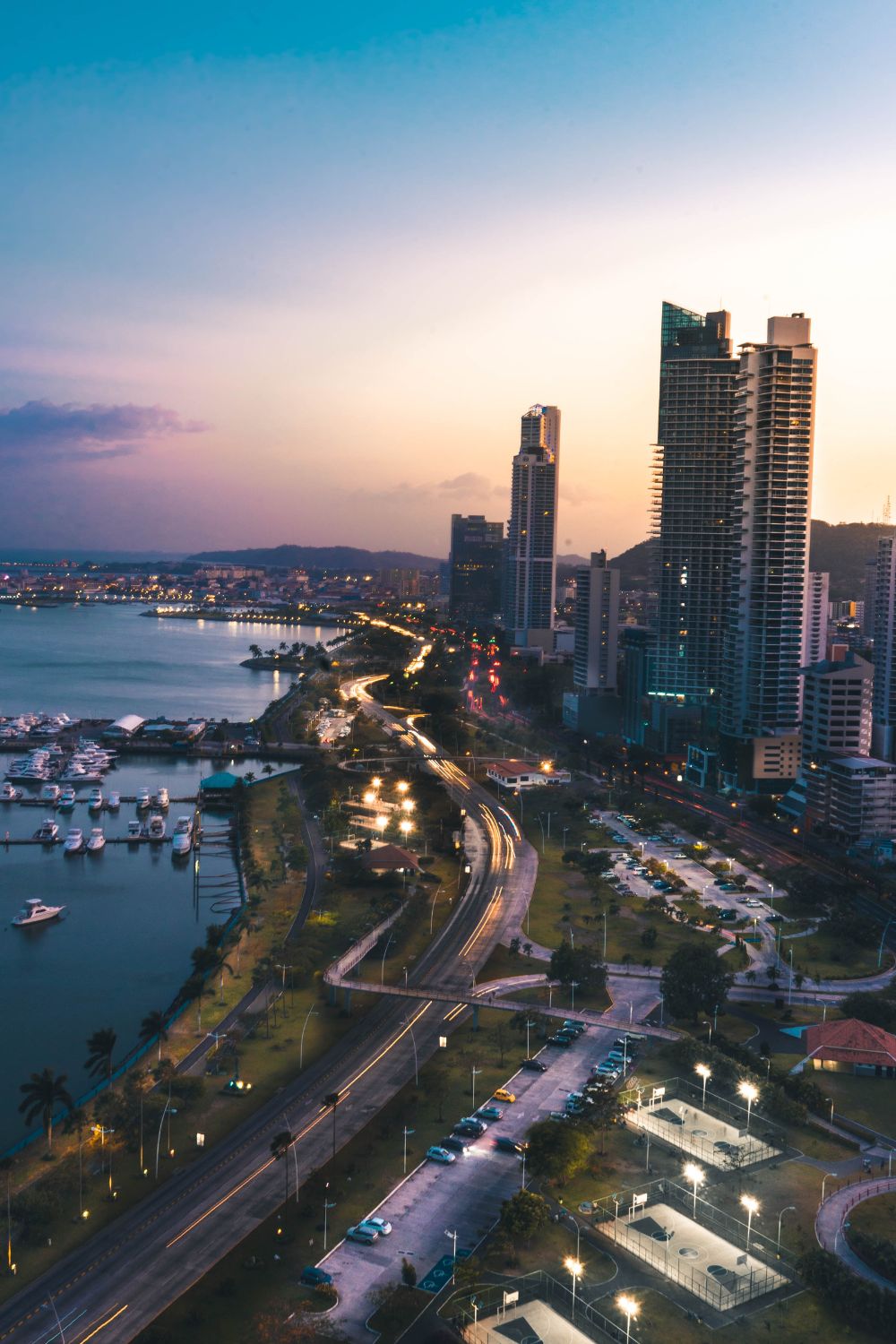
For those looking to avoid the challenges of the rainy season and the Carnival crowds, there are alternative periods to visit Panama that strike a balance between good weather, fewer tourists, and access to attractions.
Dry Season – December to April
The dry season, especially the early months of December and January, before Carnival, can be an excellent time to visit. You’ll benefit from clear skies and less rain, which makes it an ideal time for outdoor activities.
Keep in mind, though, that this is also a popular period for tourists, so some popular sites may still be crowded, and prices can be higher.
Shoulder Season – Late April and Early December
Another option is the shoulder seasons, which are the periods just before and after the rainy season. Late April, after Easter, and early December, before the Christmas rush, can be particularly good times to visit.
You might experience a few rain showers, but they’re generally short and less intense than the heavy rains seen later in the season. During these times, you can enjoy milder weather and fewer tourists.
Rainy Season – Avoiding the Peak
If your travel plans are flexible and you’re well-prepared, the rainy season (outside of its peak months) can be a good time to visit. Late April to June and November can be particularly good choices.
The rain showers are usually brief and followed by sunshine, and the whole country is lush and green. Plus, you’ll find fewer tourists, lower prices, and a more relaxed pace of life.
In the end, the best time to visit Panama depends on what you want out of your trip. Whether you’re looking to explore the great outdoors, immerse yourself in local culture, or simply relax on a tropical beach, there’s a perfect time for you to visit this diverse country.
What to Expect When Visiting Outside of Peak Times
Visiting Panama outside of peak times, such as the dry season and Carnival, can offer a different yet equally rewarding experience. Here’s what you can expect when you choose to visit during these less crowded periods.
1. Fewer Tourists: One of the most significant advantages of visiting outside of peak times is fewer tourists. This means less crowded attractions, shorter lines, and a more relaxed atmosphere. You’ll have the opportunity to enjoy Panama’s beauty at your own pace without feeling rushed or overwhelmed by crowds.
2. Lower Prices: With fewer tourists around, you’ll often find that prices for accommodations, flights, and even some local goods and services are lower. This can make your trip more affordable, allowing you to stay longer or indulge in experiences you might have otherwise skipped.
3. More Interaction with Locals: With fewer tourists around, you’ll have more opportunities to interact with the locals. This can enrich your travel experience, providing insights into Panama’s culture and way of life that you won’t get from a guidebook.
4. Greater Flexibility: When attractions are less crowded, you often have more flexibility to adjust your plans on the go. Whether it’s deciding to linger a little longer at a museum or taking a spontaneous detour on a road trip, you’ll have the freedom to follow your interests.
5. Weather Considerations: Depending on when you choose to visit, you might have to deal with less optimal weather. For instance, if you’re visiting during the rainy season, be prepared for daily showers and plan your activities accordingly. However, these showers are usually short-lived and can even be refreshing, offering a respite from the tropical heat.
6. Potentially Reduced Services: During low season, some tourist-focused services might be reduced. For instance, certain tours might not run if there aren’t enough participants, and some restaurants or shops might have reduced hours. It’s a good idea to check the availability of specific activities in advance.
Despite these considerations, visiting Panama outside of peak times can be a unique and rewarding experience. With a bit of planning and a flexible mindset, you’ll be able to enjoy all that Panama has to offer without the peak season crowds.
Proper Planning: Making the Most of Your Panama Visit
Visiting Panama, whether during the peak or off-peak season, requires thoughtful planning to make the most out of your experience. Here are some key points to keep in mind:
1. Research Weather Conditions: Understand the country’s climate and how it varies throughout the year. This will help you decide when to visit and what to pack. For instance, during the rainy season, packing a rain jacket, waterproof shoes, and umbrella would be wise.
2. Book in Advance: Popular times like the dry season and Carnival see an influx of tourists, so booking your accommodations and flights in advance is a must. This is also true for certain tours and attractions.
3. Plan Your Itinerary: Do your homework about the places you want to visit. Check if they are open and accessible during your visit, especially if you’re traveling during the rainy season or Carnival.
4. Be Flexible: Regardless of when you visit, remain flexible. Weather can change rapidly, and local events may affect access to certain attractions. Having alternative plans can help ensure your trip remains enjoyable.
5. Stay Safe: Travel insurance is a good idea, particularly if you plan to engage in adventure sports or travel during the rainy season. Always follow local advice, especially concerning weather conditions and safety precautions during Carnival.
6. Embrace the Local Culture: Part of the joy of traveling is immersing yourself in a different culture. Try the local food, learn a few words in Spanish, and engage with the locals. This will enrich your Panama experience.
Whether you choose to brave the rainy season and Carnival crowds or prefer to visit during quieter periods, Panama is a fascinating and diverse country that rewards those who visit with an open mind and a sense of adventure. Proper planning will help ensure you have a trip that’s memorable for all the right reasons.
Timing Your Visit for the Best Panamanian Experience
Choosing when to visit Panama will heavily influence your experience in this vibrant and diverse country. While the Carnival celebrations and dry season can offer a feast of cultural spectacles and ideal weather, they also bring crowds, noise, and higher prices.
On the other hand, traveling during the rainy season or outside peak times can allow for a more relaxed, authentic experience with lower costs, though it comes with its own challenges such as daily rain showers and potentially reduced services.
Understanding the implications of each season on your travel plans is key. It helps to consider what is most important to you. Are you excited by the idea of immersing yourself in the lively and colorful Carnival, or would you prefer a quieter exploration of the country’s natural beauty without large crowds? Is the potential for rain a deterrent for your outdoor adventures, or can you embrace the lush, green landscapes it brings?
Each period has its own charm, its pros and cons, but with careful planning and a flexible attitude, a trip to Panama can be a fantastic experience at any time of the year.
Ultimately, the best time to visit Panama is the time that aligns with your preferences, interests, and travel style. Whichever you choose, the richness of Panamanian culture, the beauty of its landscapes, and the warmth of its people are sure to make your visit unforgettable.

